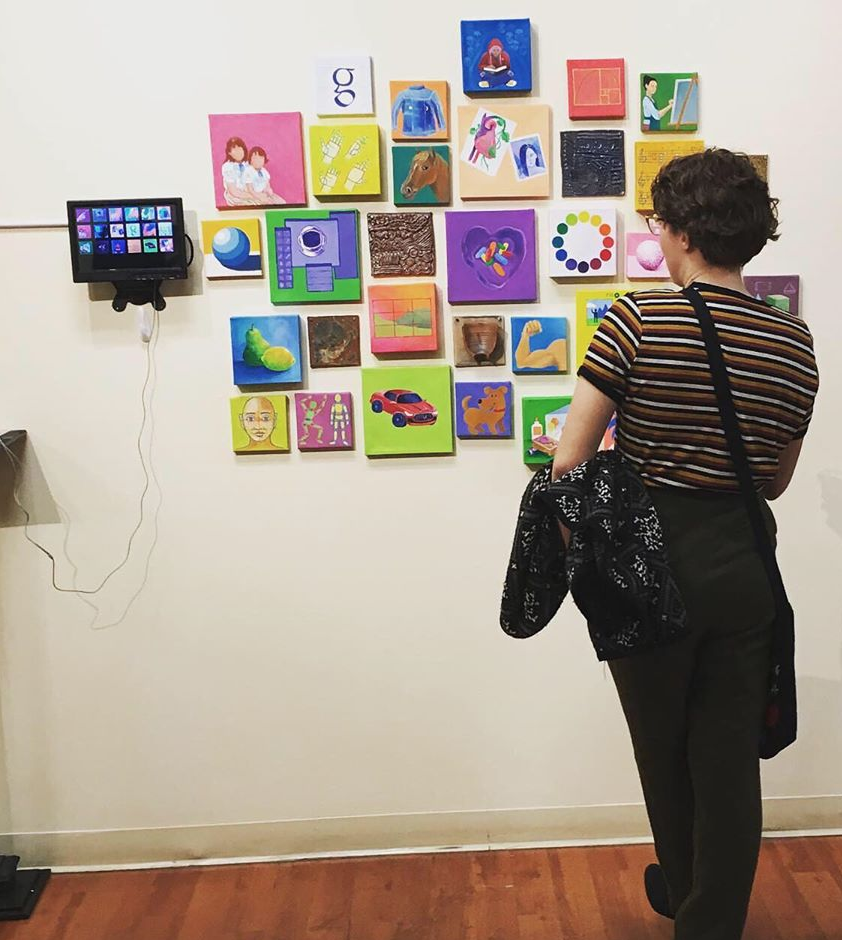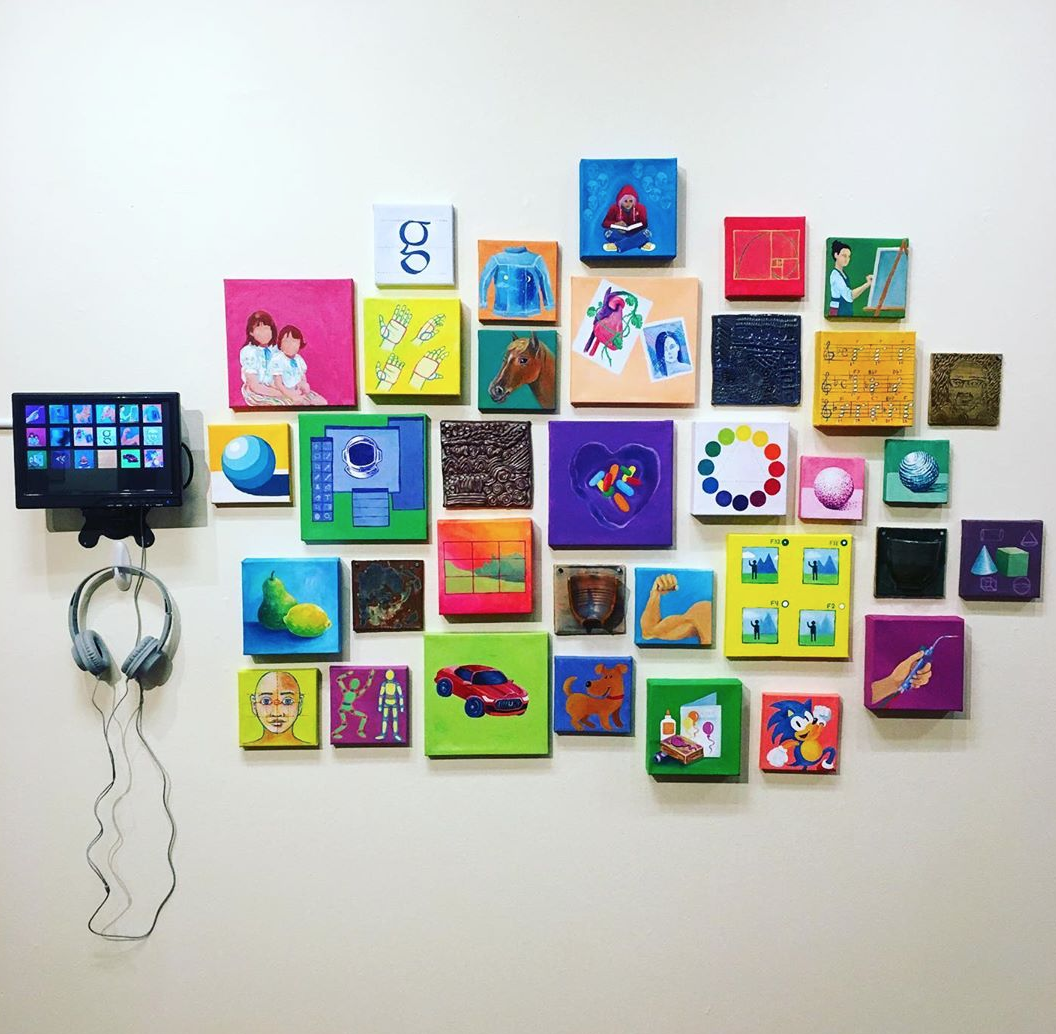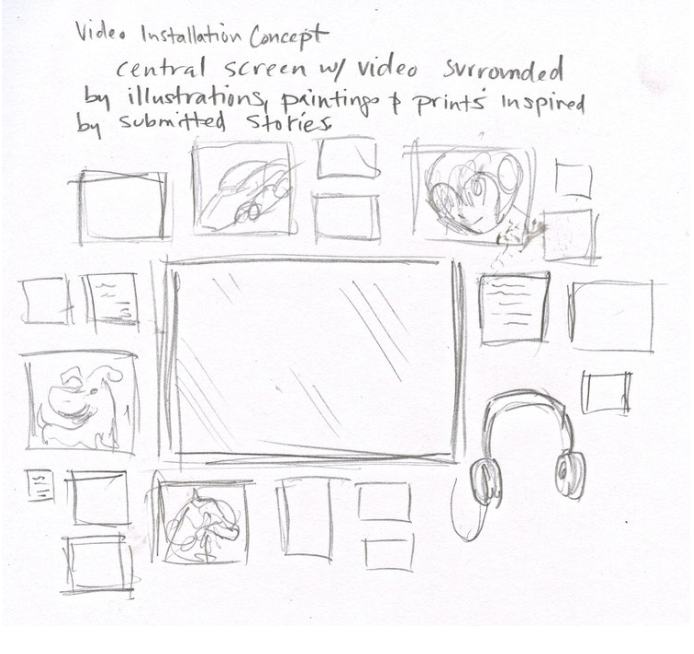What environmental factors lead
a child to form an artistic identity?
Artistic Identity, 2018
Acrylic on Canvas, Stoneware Clay, Video Installation
There is no concept through the arts that is out of reach for the learner who has the will to try, and a resourceful teacher to guide them.
I conducted an investigation centered around a simple question, “can you remember a moment when you made a decision about your artistic identity?” The question was posed to an audience of my peers, my colleagues, art teacher forums, and through friends’ and family’s social networks. I conducted a call for written, video, audio, and survey form submissions of anecdotal reports asking participants to describe moments when they made decisions about their artistic identity.
Many participants who did not consider themselves artistic contacted me to say they were hesitant to share their stories because they didn’t feel they would be relevant or valuable. These responses were invaluable - because they represented the types of learners that art educators had failed to reach. As adults, they had the language and hindsight to articulate pivotal moments that shaped their feelings about the arts and situations that were particularly discouraging for them as young learners. The task of making this visible was paramount, as the stories of those who have been discouraged from participating in the arts may seem invisible, they fall through the cracks, and the potential for their artistic journey is lost to time.
The aim of the art installation created from these stories is meant to underscore that children are simultaneously fragile and resilient, that the arts can take a hold of us and become part of our soul long after we’ve decided that it was never an option, and that even a passing comment from a teacher can have a lasting impact on a child. I used the survey results as source material to create a series of paintings and ceramic tiles that would narrate a path that art teachers can highlight for their students towards an understanding and love of the arts.
There are two components of the imagery used. One is a set of symbols and instructional images used to clarify complex concepts through the arts; another highlights important formative moments mentioned through narratives. While there are some elements of the artistic experience that seem intangible, exclusive, and esoteric, the majority of visual art appreciation and creation can be explained (and practiced) through simple language and techniques. Diagrams and symbols like the rule of thirds, the golden ratio, human anatomy, linear perspective, and the color wheel simplify complicated ideas. The essential symbols and diagrams used in art education to clarify concepts of visual art for students, along with painted tropes from stories, illustrate that there is a path for any child to be confident, skilled, and empowered to participate in visual arts if given the chance and encouragement throughout their education.



